
The Disney: Magic of Animation is currently exhibiting at the ArtScience Museum at Marina Bay Sands, and gives you an opportunity to allow your childhood come to life. From The Little Mermaid to Frozen 2, this rare opportunity to experience over 90 years of animation and original artworks by the Walt Disney Animation Studios. We sit down with Mary Walsh, Managing Director of the Walt Disney Animation Research Library to learn a bit more about how that Disney magic is brought to life.

How were the original artworks selected?
Once we decided on the overall story we wanted to tell with this exhibition, we went about determining which films from our 90-plus-year history would best represent the themes we wanted to highlight. And from there we had the fun – and somewhat overwhelming – challenge of selecting all of the artwork that would be displayed. It was definitely a collaborative process with everyone on our curatorial team working towards the same goal of creating an inspiring, interesting and beautiful exhibition.
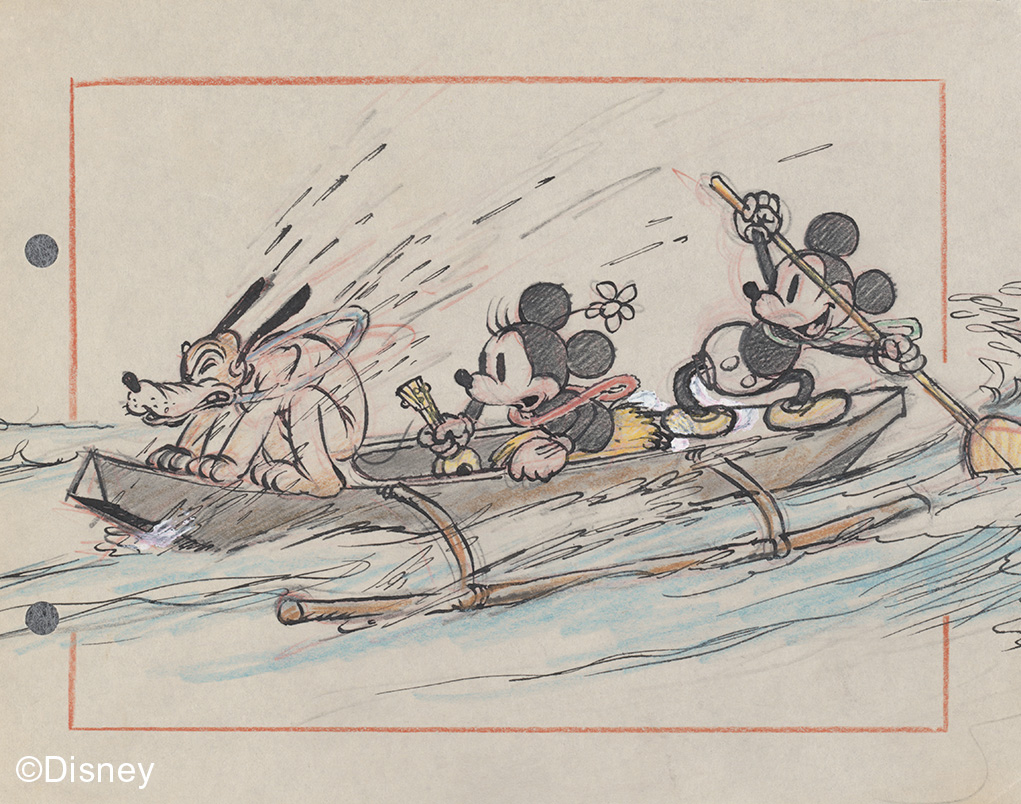 Hawaiian Holiday, 1937, Concept art, Disney Studio Artist
Hawaiian Holiday, 1937, Concept art, Disney Studio Artist
What do these artwork mean for the legacy of Disney?
So many of the works in this exhibition represent the artistic and creative legacy of Walt Disney Animation Studios, so they are not only extremely important to our company, but I would argue they serve as major milestones for the larger animation industry. So many of the animated films from Disney have inspired other filmmakers – both in animation and live action – that their historical significance cannot be under stated.
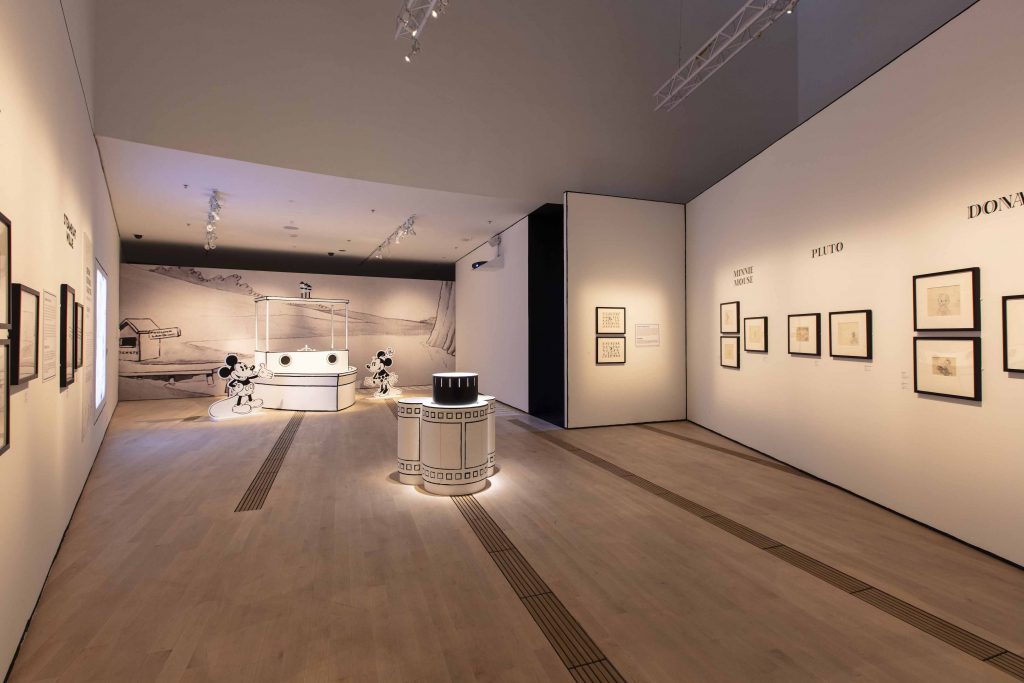
Any unmissable highlights of the exhibition?
The original animation drawing of Mickey Mouse from his first film – Steamboat Willie (1928) – it is one of the oldest pieces in our collection! The beautiful and delicate concept art from Bambi (1942), created by the Chinese American artist Tyrus Wong. Tyrus was able to communicate such a distinct sense of emotion and place with his deceptively simple, but truly intricate, technique.
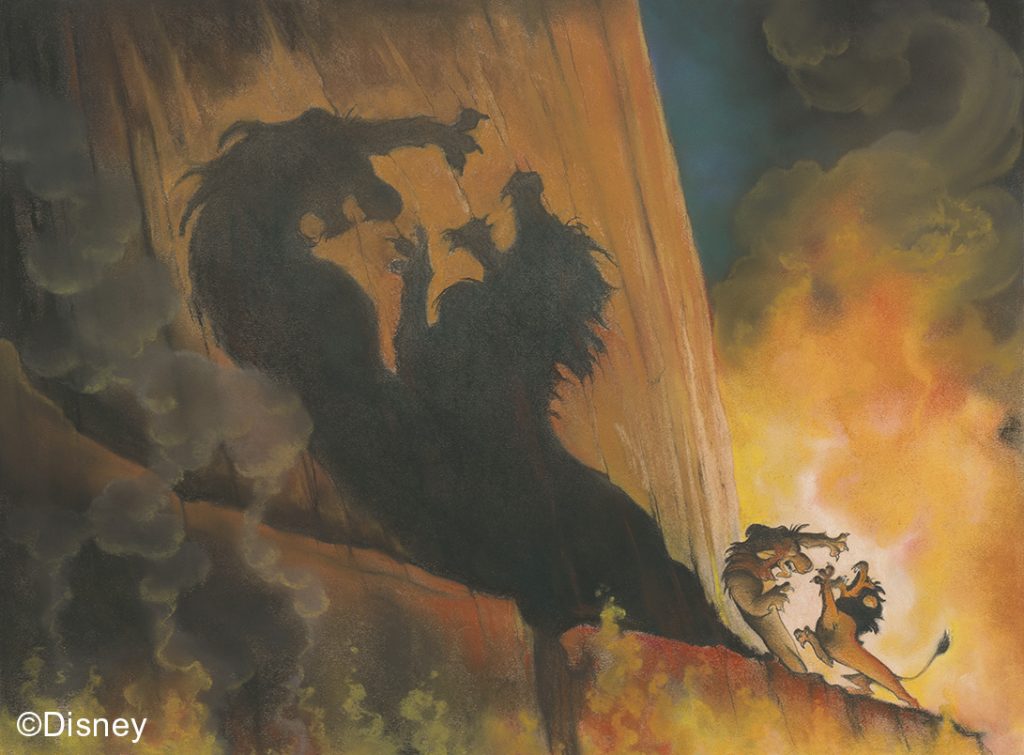 The Lion King, 1994, Concept art, Kelvin Yasuda
The Lion King, 1994, Concept art, Kelvin Yasuda
The dramatic concept art from The Lion King (1994), by Kelvin Yasuda, of Simba and Scar fighting on the edge of Pride Rock. Every time I look at it, I feel the drama and intensity of that scene. Another favourite of mine is the Candy Hollow (also known as Sugar Rush) model from Wreck-It Ralph (2012) – it was created by the visual development artist Brittney Lee using REAL candy, cereal, biscuits and other different kinds of sweet treats! It is truly a spectacular piece and is so evocative of what we see in the final film.
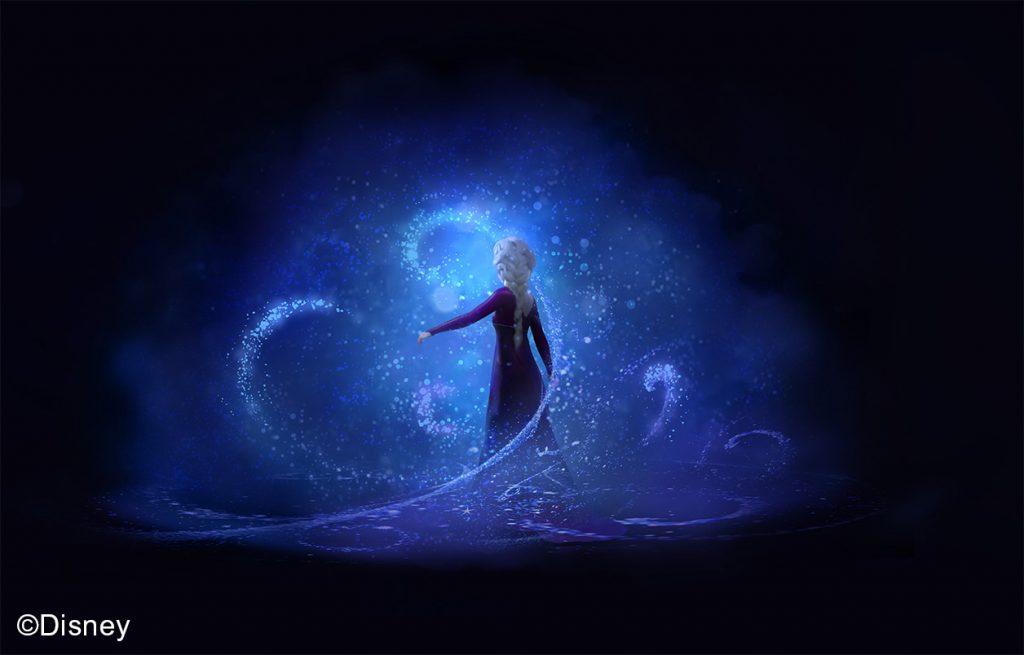 Frozen 2, 2019, Concept art, Lisa Keene
Frozen 2, 2019, Concept art, Lisa Keene
In addition to all of the beautiful artwork from the original Frozen (2013), for the first time in this exhibition – and even before the film was released in December 2019 – we have some stunning art and a really cool visual experience from Frozen 2 (2019) that should not be missed!
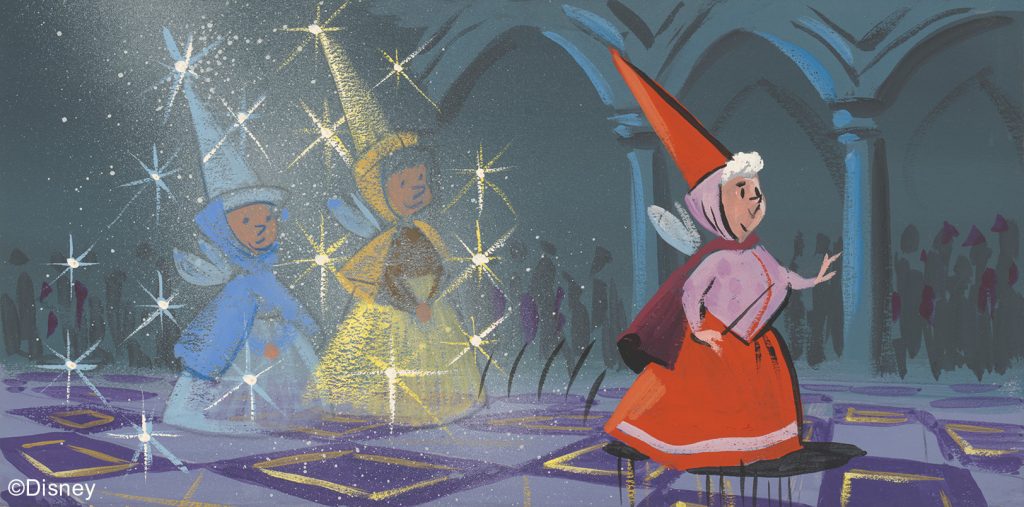 Sleeping Beauty, 1959, Concept art, Disney Studio Artist
Sleeping Beauty, 1959, Concept art, Disney Studio Artist
Can you enlighten us on any unknown or interesting facts about the exhibited artworks and exhibition?
Did you know that Plane Crazy was actually produced before Steamboat Willie, but was the third Mickey Mouse short to be released? Steamboat Willie, the first cartoon to ever be synchronised with sound, was released on November 18, 1928 and Plane Crazy received its wide release in May of 1929, after initially having a test screening – with no sound – in 1928.
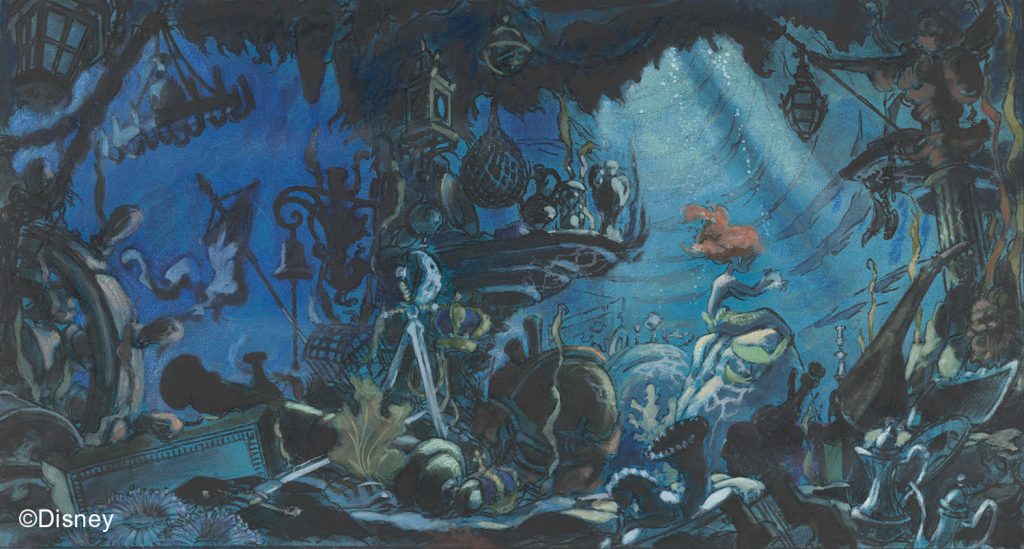 The Little Mermaid, 1989, Concept art, Michael Peraza, Jr.
The Little Mermaid, 1989, Concept art, Michael Peraza, Jr.
Ursula, the sea witch in The Little Mermaid (1989), was initially envisioned as having more fish-like traits and shapes before her final design was realised. There are several different concept drawings of Ursula reflecting those early ideas in the exhibition. The process of working out exactly how a character will appear on screen is something that every film goes through. I challenge visitors to find other examples of early character designs in other parts of the exhibition – there are many to find!
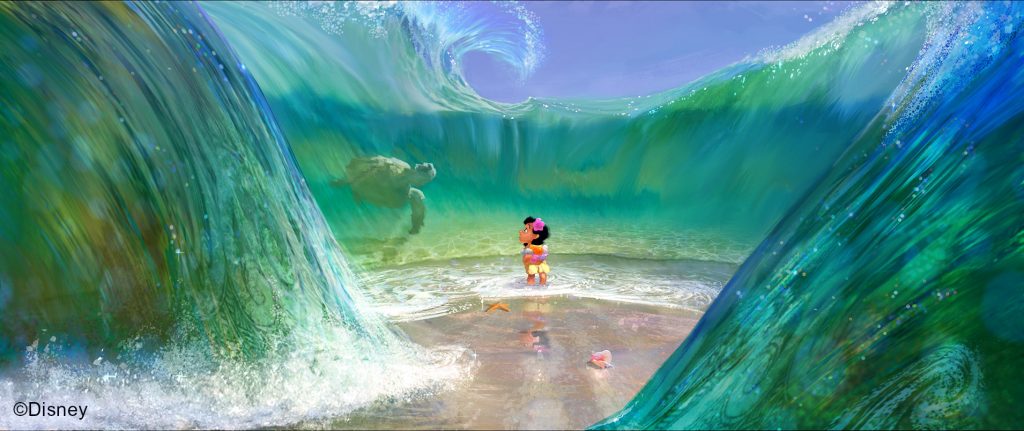 Moana, 2016, Concept art, Lisa Keene
Moana, 2016, Concept art, Lisa Keene
Effects artists at Disney – the animators who specialise in animating natural elements like wind, water, fire and snow – spend a lot of time at the beginning of a production researching how different natural elements look, move and feel. For Fantasia (1940), effects artists actually set up large pots of bubbling mud at the Studio in order to better replicate lava for the “Rite of Spring” segment. There are story sketches in the Fantasia gallery where you can see the results of their research. That same level of study and research went into the creation of realistic water for Moana (2016). How else do you think the artists were able to create a special effect that made the ocean water feel and act like a real character?
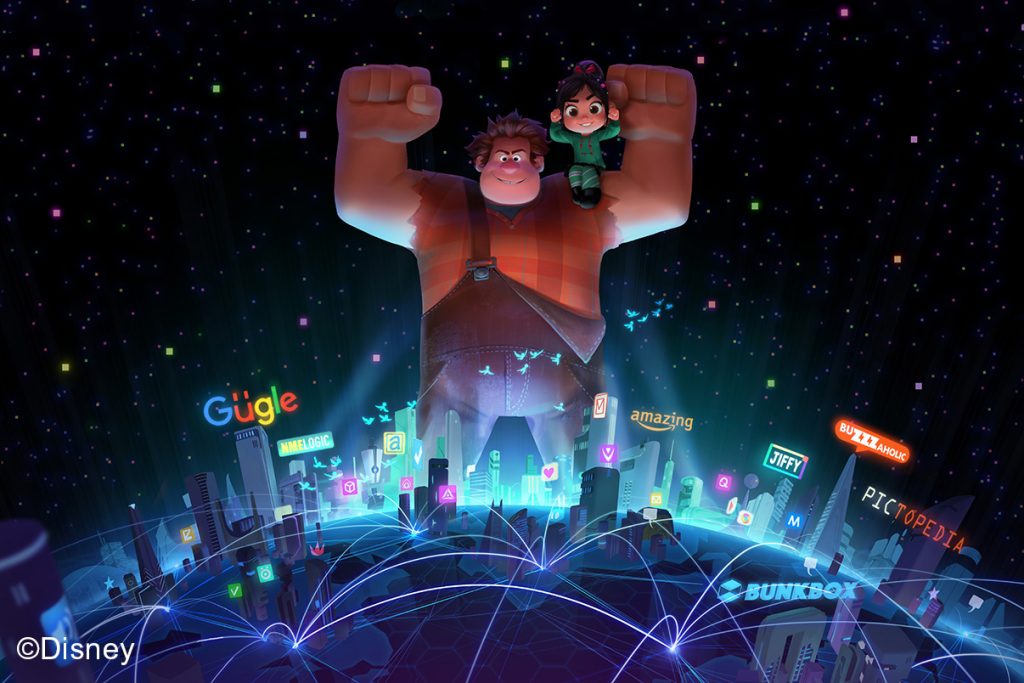 Ralph Breaks the Internet Wreck-It Ralph 2, 2018, Concept art, Mingjue Helen Chen
Ralph Breaks the Internet Wreck-It Ralph 2, 2018, Concept art, Mingjue Helen Chen
Will there be any additions to future Disney exhibitions?
We have added new artwork to almost every installation of this exhibition, and our expectation is that we will continue to do that as we travel this exhibit to new venues around the world.
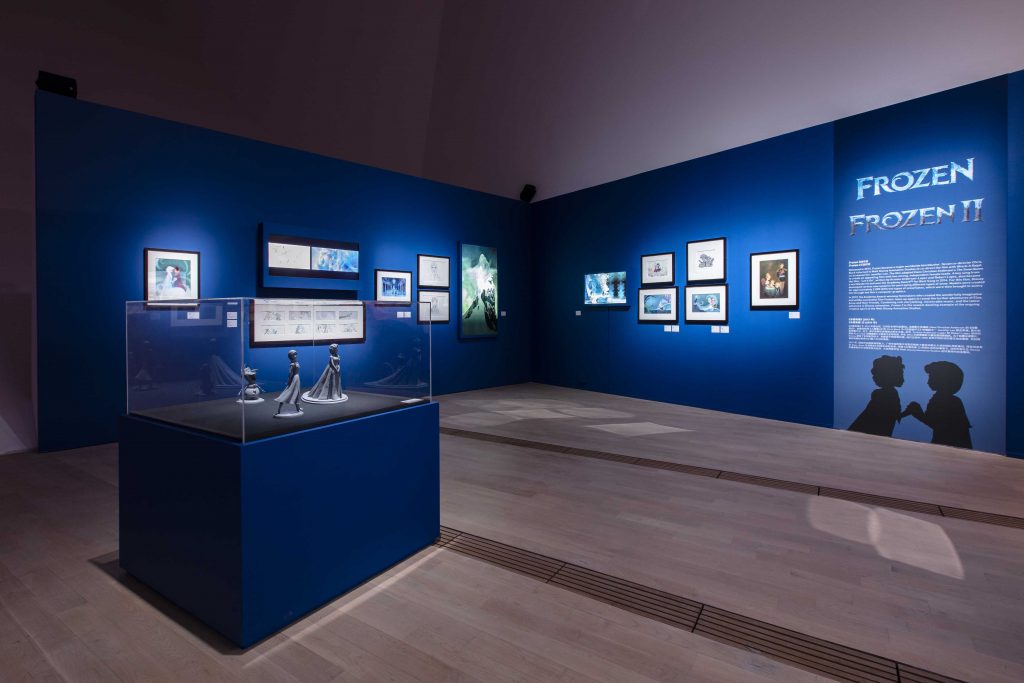
Why was ArtScience Museum chosen to showcase Disney: Magic of Animation exhibition?
We had been aware of the ArtScience Museum for quite some time and had the opportunity to visit and meet with the team there a number of years ago. After that initial visit, we became convinced that this museum would be an ideal venue for our exhibition given its mission to showcase art and technical innovation. Disney animation has always embraced technical innovation in order to push the artistry and complexity of our films, so we felt that the mission of ArtScience was a natural complement to our exhibition. Plus, the building itself is a work of art and has such an iconic design that we were instantly inspired by it.
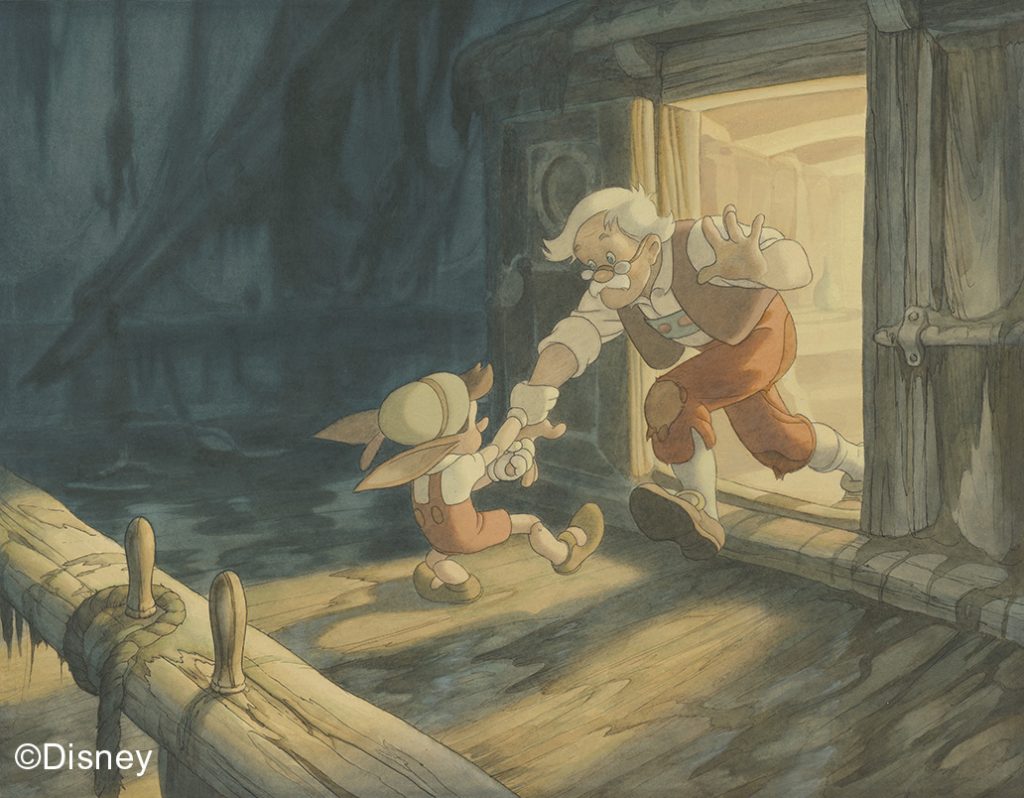 Pinocchio, 1940, Concept art, Gustaf Tenggren
Pinocchio, 1940, Concept art, Gustaf Tenggren
How are these artworks and creations preserved?
All of the artwork included in this exhibition is housed at the Walt Disney Animation Research library, a state-of-the-art collection facility in Southern California. We have over 65,000,000 pieces of original Disney animation art in our collection and we care for and preserve that art following the highest standards of art conservation and archiving methodologies.
The art in our collection dates back to the very beginning of the Walt Disney Studios – from the 1920s – through to present day. We are entrusted to conserve and protect the artistic heritage of the Walt Disney Animation Studios and our mission is to make the art available to the Walt Disney Company for creative inspiration, reference, and enrichment. The Animation Research Library also works with museums throughout the world to curate and exhibit materials from this collection in order to highlight and celebrate this distinctive art form.
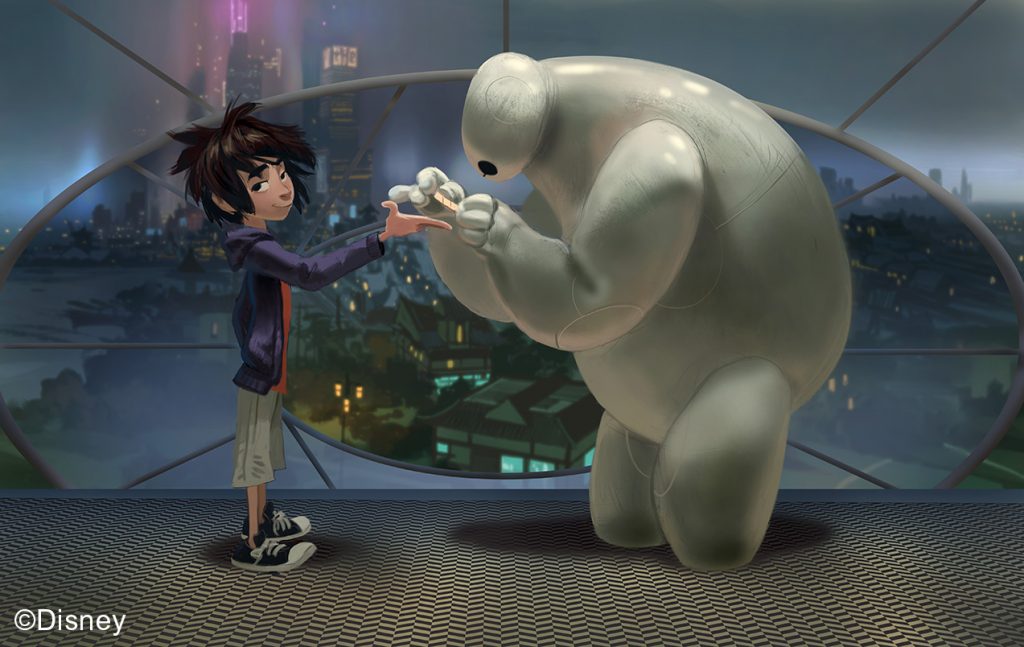 Big Hero 6, 2014, Concept art, Paul Felix
Big Hero 6, 2014, Concept art, Paul Felix
How were the animations created?
Animation is a truly collaborative art form. It takes hundreds of artists and production personal working together, under the guidance of a film’s director(s), to a create a feature length film. It can take three to five years to produce a Disney animated movie and that time is dedicated to creating a believable world, with appealing characters and a compelling story.
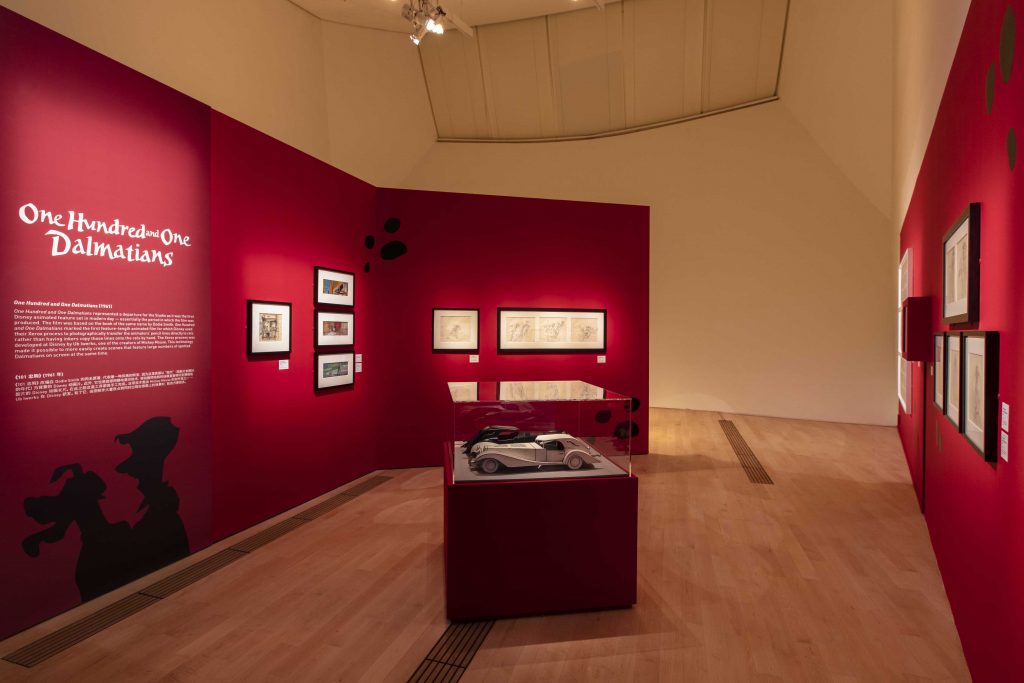
How much time goes into creating a character?
Crafting our characters is a critical part of the development process of all of our films. The film director(s) will work closely with character designers, as well as animators, to fine tune the look of each character. It is so important to be able to capture the core characteristics – their strength, attitude, determination, intelligence, spirit – in the development of each character.
In addition, the design of the character needs to fit into the world in which the story will take place. As an audience member, you have to believe that Snow White lives in the same world as the Evil Queen does, or that Moana’s design fits into the environment of her home island, Motunui.
The Disney: Magic of Animation which runs from 26th October to 29th May 2020.
For other related activities, see Marina Bay Sands.
| PHOTOGRAPHY BY: DISNEY & MARINA BAY SANDS | WEBSITE: MARINA BAY SANDS |